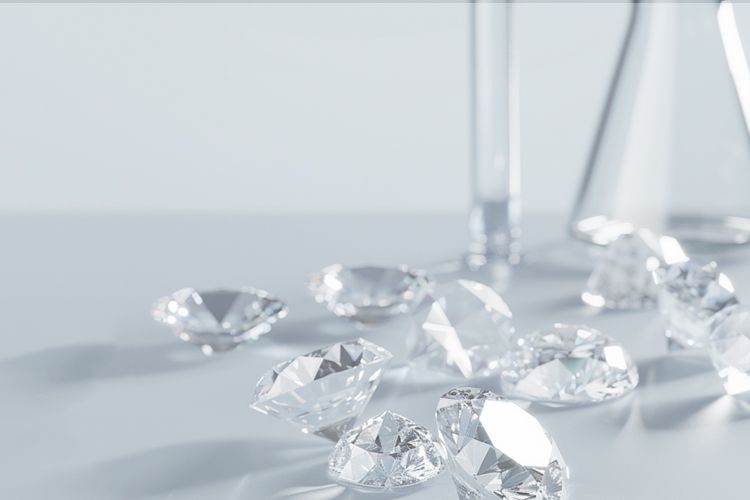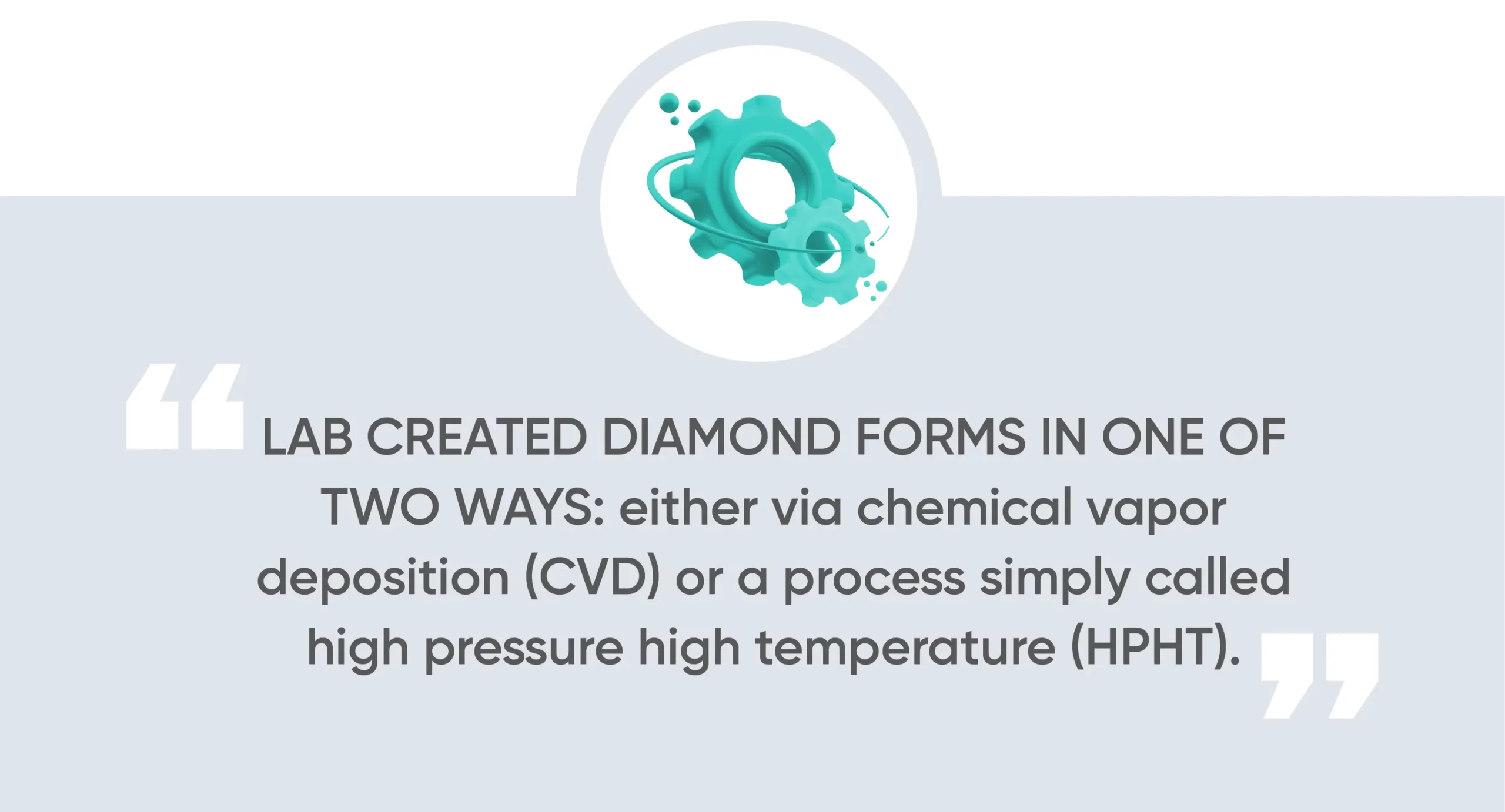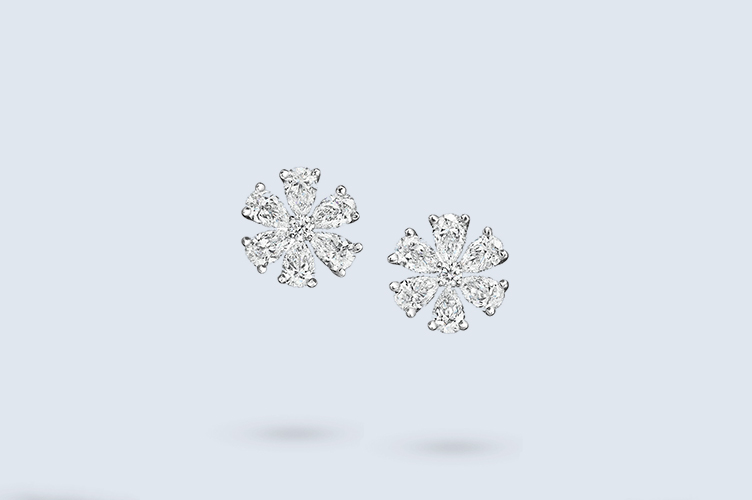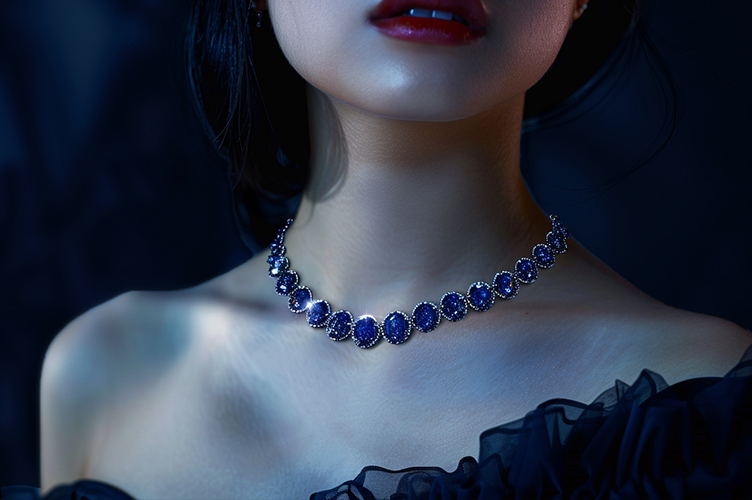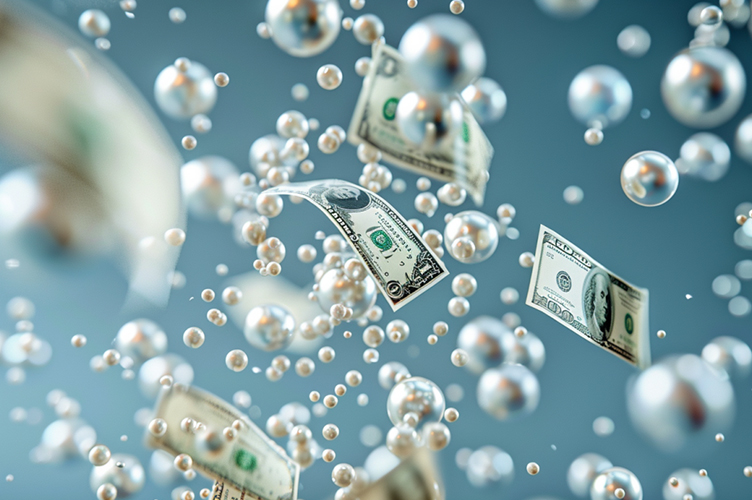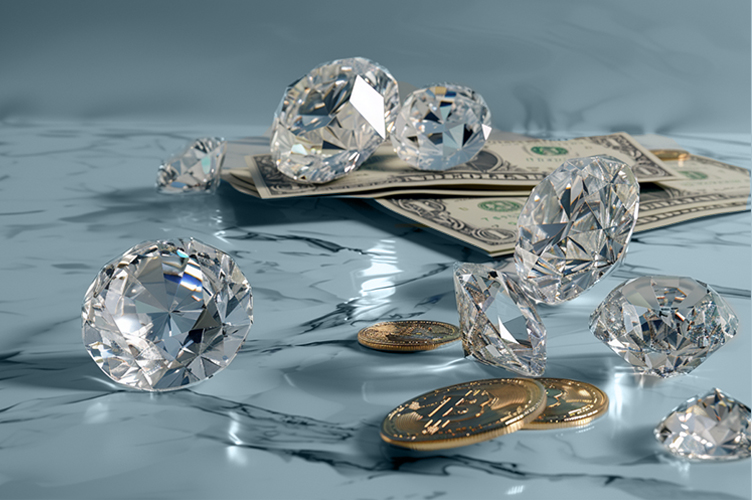What Are Lab Grown Diamonds: What to Know Before You Buy
Lab grown diamonds have received more and more attention in recent years, with new generations of jewelry shoppers looking for more affordable, as well as more environmentally friendly, diamonds (though there is a debate around just how sustainable lab created diamonds are, which we’ll cover momentarily).
Today, it’s not uncommon to find lab grown diamonds at just about any jewelry store, and you’ll see advertisements for lab grown diamond jewelry brands online and on social media. You likely know at least a few family members or friends who’ve opted for lab diamonds over natural diamonds.
Given all this attention and publicity, you’ve probably caught on to the fact that, yes, lab diamonds are man made diamonds produced via artificial means — but what are lab grown diamonds, really? How different are they from mined diamonds? Are synthetic diamonds worth the same as natural diamonds?
We’re covering everything you need to know before purchasing a lab diamond — or deciding that a lab created diamond just isn’t for you.
What You Will Learn
- Understanding Lab-Grown Diamonds: How are Lab Made Diamonds Made?
- Are Lab Grown Diamonds Real Diamonds? Lab Diamonds vs. Mined Diamonds
- Why are Lab Grown Diamonds Cheaper?
- Benefits of Choosing Lab Grown Diamonds
- Evaluating the Quality of Lab Grown Diamonds
- Choosing the Right Lab Grown Diamond
- Where to Buy Lab Grown Diamonds?
- Maintenance and Care for Lab Grown Diamonds
- What are Lab Grown Diamond FAQs?
- Is a Lab Grown Diamond in Your Future?
Understanding Lab-Grown Diamonds: How are Lab Made Diamonds Made?
Put very, very simply, lab grown diamonds are just that: diamonds grown in a lab. Sometimes they go by other names, such as engineered diamonds or cultured diamonds, but, ultimately, a lab created diamond forms in one of two ways: either via chemical vapor deposition (CVD) or a process simply called high pressure high temperature (HPHT). Growing diamonds using either method usually takes weeks to months, compared to the millions of years the Earth needs to do the same job.
What is Chemical Vapor Deposition?
The chemical vapor deposition (CVD) process uses something known as a diamond seed, which is just a very, very tiny diamond. The lab places the diamond seed in a high-temperature vacuum chamber, exposing it to methane gas.
Carbon (remember: diamonds are nearly 100% pure carbon atoms) within the gasses attach themselves to the diamond seed, and, slowly, the carbon builds up over time until a larger rough diamond forms. Thus, the lab has taken a very small (sometimes as small as a strand of hair) piece of diamond and “grown” it into a larger, gem-quality diamond that can be used anywhere you might use a mined diamond.
CVD is sometimes also implemented to manipulate diamond crystals for use in industry. For example, CVD can create a single crystal diamond to be of use in manufacturing.
What is High Pressure High Temperature?
The high pressure high temperature (HPHT) method more closely aligns with the natural diamond formation process that occurs within the Earth’s mantle. Within a controlled environment, a lab exposes carbon to, just as the name suggests, high pressure and high temperature until a diamond forms.
Are Lab Grown Diamonds Real Diamonds? Lab Diamonds vs. Mined Diamonds
So, are lab grown diamonds real?
Yes, lab grown diamonds are very real diamonds. These aren’t artificial diamonds in the slightest. They share mined diamonds’ physical properties and are identical down to their chemical properties. The industry considers both to be authentic, regardless of differences in origin.
That said, there are some slight differences and trends. (These differences do not make diamonds grown in a lab any less “real diamonds,” though.)
For example, exposure to various environmental factors that can impact the appearance of mined diamonds –– other elements and variations in geography and geology can lead to inclusions and coloration that do not occur when diamonds form within a lab’s carefully controlled environment. A lab can undoubtedly manipulate the diamond to feature some inclusions and coloration (as is the case when growing fancy colored diamonds, such as yellow diamonds). Still, if just growing a simple, gem-quality diamond, the lab grown diamond will nearly always possess greater clarity, with fewer inclusions and imperfections.
Why are Lab Grown Diamonds Cheaper?
Lab grown diamonds are real, precisely the same as mined diamonds, and are often of higher clarity and better color than mined diamonds. Why do they cost so much less than natural diamonds pulled from the Earth’s surface? In some cases, you can purchase lab grown diamond rings for up to 50% less than the cost of a natural diamond engagement ring.
This cost reduction comes down to a few different factors. For example:
- Lab grown diamonds aren’t as labor-intensive as diamonds from the mined diamond industry, lowering the cost.
- The general public doesn’t perceive lab grown diamonds as valuable as mined diamonds.
- There’s a near-endless supply of lab grown diamonds, whereas mined diamonds are finite, which increases their cost.
Benefits of Choosing Lab Grown Diamonds

Many benefits come with buying lab grown diamonds.
- Cost Efficiency
First and foremost, there is, as mentioned, the lower cost. Lab grown diamonds are significantly cheaper than mined diamonds, despite being identical in chemical and physical makeup to mined diamonds and often of very high quality. The cost difference is due to public perception, availability, and lower labor costs, among other factors. You can find a lab grown diamond going for 30–50% less than a mined diamond of a similar quality and size. In short, you can get more and better diamonds for your money if you go the lab grown route.
- Environmental Impact
Often, lab grown diamonds have a reputation as being more sustainable and more environmentally friendly than mined diamonds — in some cases, this is true. In other cases, though, it’s not.Yes, lab grown diamonds eliminate the need for traditional mining, which significantly impacts the planet. However, developing a diamond in a lab requires quite a lot of energy. If that energy usage is not sustainable and eco-friendly, neither is the diamond. Unfortunately, some reports claim that lab grown diamonds often occur in countries that rely heavily on fossil fuels.There’s so much controversy surrounding the sustainability, or lack thereof, of lab grown diamonds that the Federal Trade Commission has gotten involved in the past, warning lab grown jewelry brands about their use of words like “sustainable” or “eco-friendly” to describe their lab grown diamonds, saying that the brands must be able to prove how their diamonds might be more sustainable or eco-friendly than a mined diamond if they want to use such terms.
So, is sustainability and eco-friendliness a benefit you can expect from buying a lab-grown diamond? It depends on whom you ask, your beliefs regarding sustainability, and where you purchase the diamond specifically.
- Ethical Considerations
Another supposed benefit of buying a lab grown diamond, which is likely equally divisive, is the diamond’s ethical considerations. Many claim that mined diamonds are intertwined with conflict in some of the world’s most vulnerable countries and that the industry is exploitative, taking advantage of impoverished workers subjected to extremely detrimental labor environments. Others, however, argue that diamond mining provides economic opportunities to these same populations and countries that, with the proper regulatory safeguards in place, can benefit developing countries.
Again, this is one benefit to analyze on your own, researching where and how your specific diamond was either mined or grown to determine if the diamond aligns with your values.
Evaluating the Quality of Lab Grown Diamonds
Lab grown diamonds receive grades based on the 4 Cs, just like natural diamonds. If you’re unfamiliar with “the 4 Cs,” they stand for:
- Cut
- Color
- Clarity
- Carat weight
The better a diamond performs in these four categories, the higher the price (typically).
Clarity refers to the diamond’s inclusions or lack of inclusions. As mentioned, lab grown diamonds often boast a higher clarity than natural diamonds. Clarity is graded on a scale from “F” or “flawless,” the best grade a diamond can get, to “I” or “included,” which means the diamond’s internal imperfections are visible to the naked eye.
Similarly, color refers to the diamond’s lack of color. Diamonds receive a letter grade that indicates the amount of color visible in the diamond, starting at D and running to Z. The closer the letter is to the start of the alphabet, the less color. A diamond graded as “D” through “F” is considered colorless.
Carat applies to the diamond’s weight, and cut refers to how the diamond was cut and to what degree that cut accentuates the stone’s best features.
Whenever shopping for a lab grown diamond, or any diamond, and a seller makes claims regarding cut, color, clarity, or carat, ensure there is certification from a reputable lab, such as the Gemological Institute of America or the International Gemological Institute.
Choosing the Right Lab Grown Diamond
If you’ve decided a lab grown diamond is right for you, don’t rush off to a jewelry store or shop online. Take a moment to research your diamond options in general so you know both what you like and what you can afford.
For example, suppose you’re specifically shopping for an engagement ring. In that case, you’ll likely want to look for a diamond with a higher color and clarity rating than you might otherwise, as the diamond will be the ring’s focal point. Any inclusions or imperfections are more likely to be noticed.
Additionally, everyone has their personal preferences as far as cuts go. Explore the different types of diamond cuts to see what feels right to you.
As you begin to understand your preferences, you’ll also start to understand what you can afford. For example, as with any diamond, a larger lab made diamond will cost more than a smaller one. However, suppose you sacrifice a little carat weight. In that case, you may be able to afford a gemstone of a higher clarity and better color. Likewise, some diamond cuts cost more than others. Typically, the round brilliant cut is the most expensive diamond cut, so if you want a round brilliant diamond, you may need to opt for a smaller diamond.
Where to Buy Lab Grown Diamonds?
Once you’re finally ready to make your purchase, only shop with a reputable retailer, whether you buy your diamond online or in the store. Ask the retailer critical questions regarding their policies, as well as their sourcing. Remember to ask:
- Where they source their lab grown diamonds
- What kind of grading certifications come with the diamond
- What their return policies are
The seller should have no problem supplying the diamond’s grade report ahead of your purchase.
If working with a jeweler in person, you can further verify their legitimacy by ensuring that the jeweler can show proof of credentials (like accreditation from a respected organization such as the Gemological Institute of America).
Maintenance and Care for Lab Grown Diamonds
Once you (finally!) have your new, lab grown diamond home, take the proper precautions to avoid damage and keep your diamond looking pristine and good as new, long-term. The same cleaning, maintenance, and care methods and practices that apply to natural diamonds also apply to lab grown diamonds.
Here are just a few tips:
- Have your diamond jewelry inspected by a qualified jeweler annually to address any wear and tear-related damage before it becomes irreversible.
- Ask a professional jeweler to likewise clean your diamond jewelry on at least an annual basis.
- Store your diamond jewelry separately from other pieces to prevent damage.
- Remove your diamond jewelry before any activities that might expose the diamonds to water, sweat, or chemicals, such as sunscreen, lotion, or other beauty products.
Cleaning Diamond Jewelry at Home
If you need to clean your diamond jewelry at home, do so with the most gentle cleaning method possible. Mix mild dish soap with warm water, then use the mixture and a soft-bristled toothbrush to gently wipe away any residue or debris. Rinse the jewelry and dry it with a soft, clean jewelry cloth. Clean only one piece of jewelry at a time. For any further or more intense cleaning, consult a professional.
You can download a free guide to cleaning and maintaining your fine jewelry here. Watch videos that describe how to clean your jewelry at home as well.
Specialized Diamond Coverage
Of course, even with the utmost and careful jewelry maintenance, your pieces can still end up accidentally damaged or — even worse — lost. Having the right jewelry insurance comes into play for some peace of mind. A comprehensive and specialized jewelry insurance policy can protect your new diamond after damage, loss, theft, and more (in ways that your homeowners’ or renters’ insurance won’t).
What are Lab Grown Diamond FAQs?
What are Lab Diamonds Made Of?
Wondering what is a lab grown diamond made of? You’re not alone! It’s one of the top questions shoppers ask when buying a lab grown diamond. However, it’s nothing secret or unusual. Lab and natural diamonds are the same thing: more than 99% pure carbon.
What are Diamond Simulants? Are Diamond Simulants the Same as Lab Diamonds?
Diamond simulants are not the same as lab grown diamonds. Lab grown diamonds are chemically and physically identical to natural diamonds. Diamond simulants are not; they look similar to natural diamonds but have a totally different physical makeup. Cubic zirconia is a diamond simulant.
Do Lab Grown Diamonds Pass a Diamond Tester?
Yes, lab-grown diamonds generally pass diamond tester inspections, showing results identical to real diamonds in most cases. However, certain tests looking for nitrogen levels, which are typically present in natural diamonds but not in lab-grown ones, might not identify lab-grown diamonds as real.
Do Lab Grown Diamonds hold their value?
Lab-grown diamonds do not hold their value in the same way as natural diamonds do. While natural diamonds can retain about 25% to 50% of their purchase value, lab-grown diamonds may have little to no resale value depending on the market. However, there is still a resale market for lab-grown diamonds, with their value largely depending on carat and quality, though it fluctuates with the diamond commodity market.
What are Lab Grown Diamonds Called?
Lab grown diamonds go by various names, including “engineered diamonds,” or “cultured diamonds,” or “man made diamonds.” There is disagreement about labeling lab grown as “synthetic diamonds” as this term is often confused with diamond simulants like cubic zirconia or moissanite.
Is a Lab Grown Diamond in Your Future?
For many, a lab grown diamond is an affordable alternative to a mined diamond, with the same quality, appearance, and chemical makeup, but at a fraction of the price. With reputable lab grown diamond sellers, more readily discoverable and lab grown diamonds are easily available. If a lab grown diamond piques your interest, you’ve no reason not to explore adding one to your jewelry collection or using one for a significant piece, such as an engagement ring.
However, carefully choose your lab grown diamond, consider the 4 Cs, and work with a reputable jeweler or online retailer. Then, show equal caution when maintaining and caring for your lab grown diamond jewelry at home.
Still on the fence or need more info before you take the plunge? Check out our lab grown diamond shopping guide or learn more on our website at https://brite.co/blog/.

